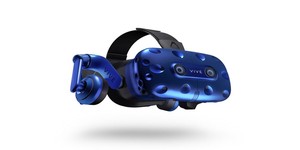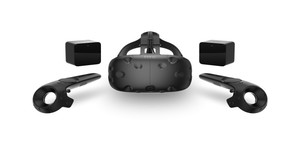
Valve is officially bringing its SteamVR platform to Linux, including its own Debian-based SteamOS platform, with the launch of an early developer build this week.
While Windows gamers with sufficiently beefy systems have been enjoying the resurgence of interest in virtual reality, those on alternative platforms have largely been left out. For those watching Valve's progress in the arena, this can particularly sting: The company made much of launching its own gaming-centric operating system, SteamOS, but has thus far failed to port its own SteamVR platform - leaving those running SteamOS-based Steam Machines unable to use virtual reality functionality, until now.
Valve has officially launched a beta build of SteamVR for Linux, which uses the low-level Vulkan application programming interface (API) from the Khronos Group in place of the Windows-only DirectX API suite. Using the released build, pre-release versions of AMD's and Nvidia's respective graphics drivers, and an HTC Vive headset, developers are finally able to use SteamVR under Linux albeit with some caveats. Chief among these is that software written to use OpenGL runs too slowly, hence the use of the Vulkan API; another is that development requires the use of the latest Unity 5.6 with no other game engine currently supported. Other known bugs include a lack of desktop view, no power management functionality in the tracking base stations, no automatic switching to and from the headset-connected headphones, and no ability to manually switch to and from direct mode.
'This is a development release. It is intended to allow developers to start creating SteamVR content for Linux platforms,' Valve's documentation warns those who may be hoping to use the beta release to game. 'Limited hardware support is provided, and pre-release drivers are required. Linux support is currently only available in the "beta" branch.'
Anyone interested in giving SteamVR for Linux a run can find details on the Valve GitHub repository. At the same time, Valve has announced that it is doing away with the paid-for training previously required to become a SteamVR Tracking partner, saving anyone looking to ship SteamVR compatible hardware $3,000 (around £2,400).
While Windows gamers with sufficiently beefy systems have been enjoying the resurgence of interest in virtual reality, those on alternative platforms have largely been left out. For those watching Valve's progress in the arena, this can particularly sting: The company made much of launching its own gaming-centric operating system, SteamOS, but has thus far failed to port its own SteamVR platform - leaving those running SteamOS-based Steam Machines unable to use virtual reality functionality, until now.
Valve has officially launched a beta build of SteamVR for Linux, which uses the low-level Vulkan application programming interface (API) from the Khronos Group in place of the Windows-only DirectX API suite. Using the released build, pre-release versions of AMD's and Nvidia's respective graphics drivers, and an HTC Vive headset, developers are finally able to use SteamVR under Linux albeit with some caveats. Chief among these is that software written to use OpenGL runs too slowly, hence the use of the Vulkan API; another is that development requires the use of the latest Unity 5.6 with no other game engine currently supported. Other known bugs include a lack of desktop view, no power management functionality in the tracking base stations, no automatic switching to and from the headset-connected headphones, and no ability to manually switch to and from direct mode.
'This is a development release. It is intended to allow developers to start creating SteamVR content for Linux platforms,' Valve's documentation warns those who may be hoping to use the beta release to game. 'Limited hardware support is provided, and pre-release drivers are required. Linux support is currently only available in the "beta" branch.'
Anyone interested in giving SteamVR for Linux a run can find details on the Valve GitHub repository. At the same time, Valve has announced that it is doing away with the paid-for training previously required to become a SteamVR Tracking partner, saving anyone looking to ship SteamVR compatible hardware $3,000 (around £2,400).

MSI MPG Velox 100R Chassis Review
October 14 2021 | 15:04








Want to comment? Please log in.